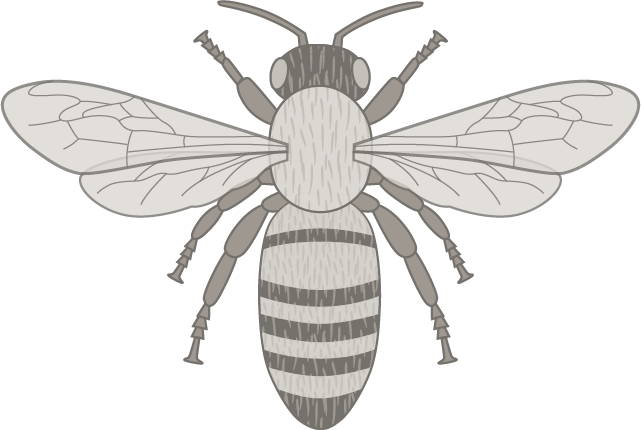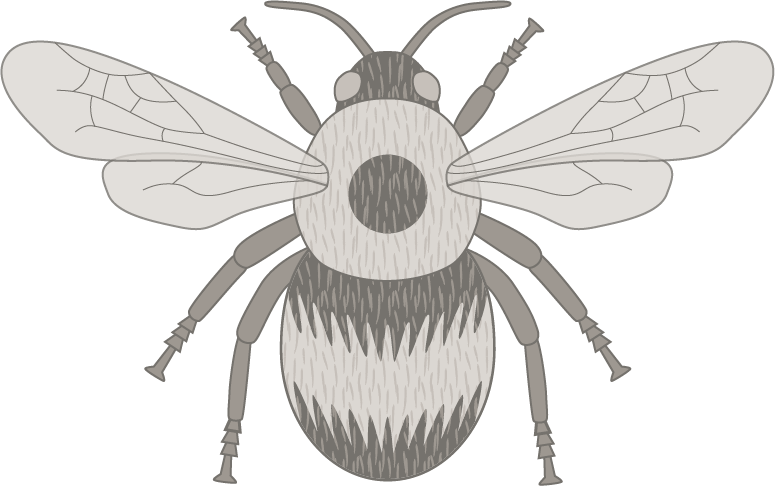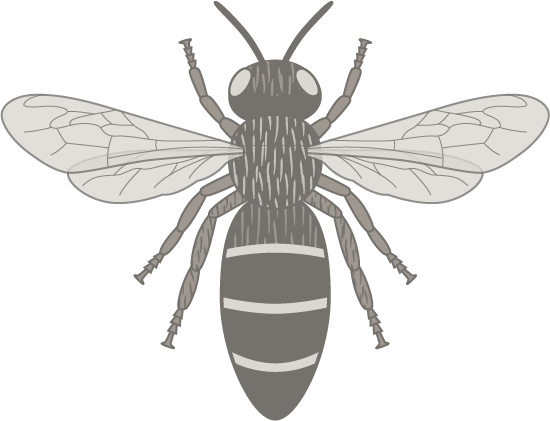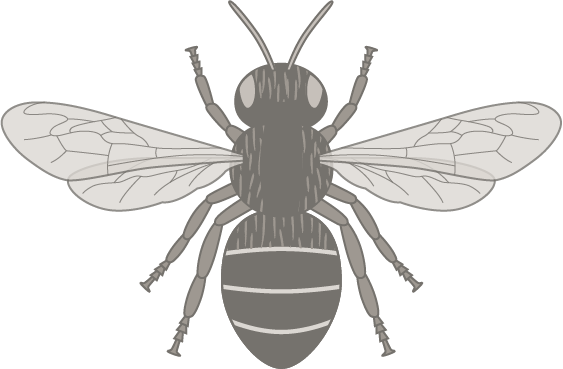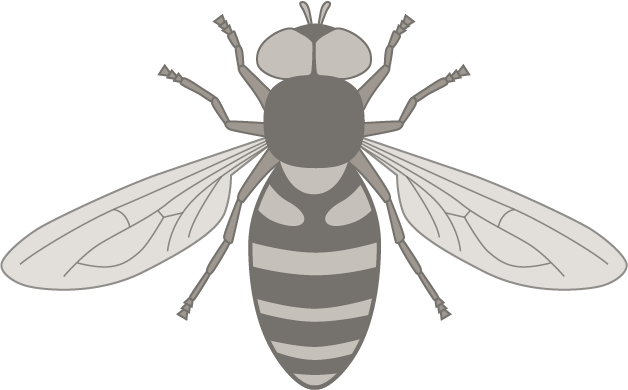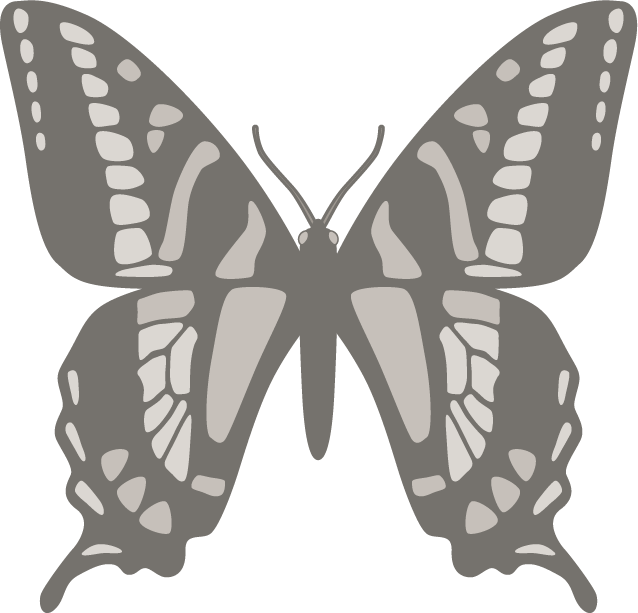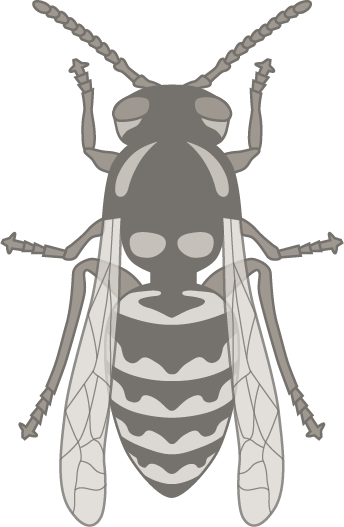Pollinator Categories
Before recording your first observation with Insight, familiarize yourself with the 7 pollinator categories used in the app.
Honey Bee · Apidae: Apis
Overview
Apis mellifera, also known as the Western honey bee, are long-tongued bees in the family Apidae. Honey bees carry pollen on legs in baskets. The Western honey bee plays an important role in the economics of agricultural crop pollination, and is the only bee in North America that makes honey for winter food stores. Originally from Europe, honey bees live in hives containing tens of thousands of female workers and in most circumstances need human management (beekeepers) to survive in British Columbia.
Key Identifiers
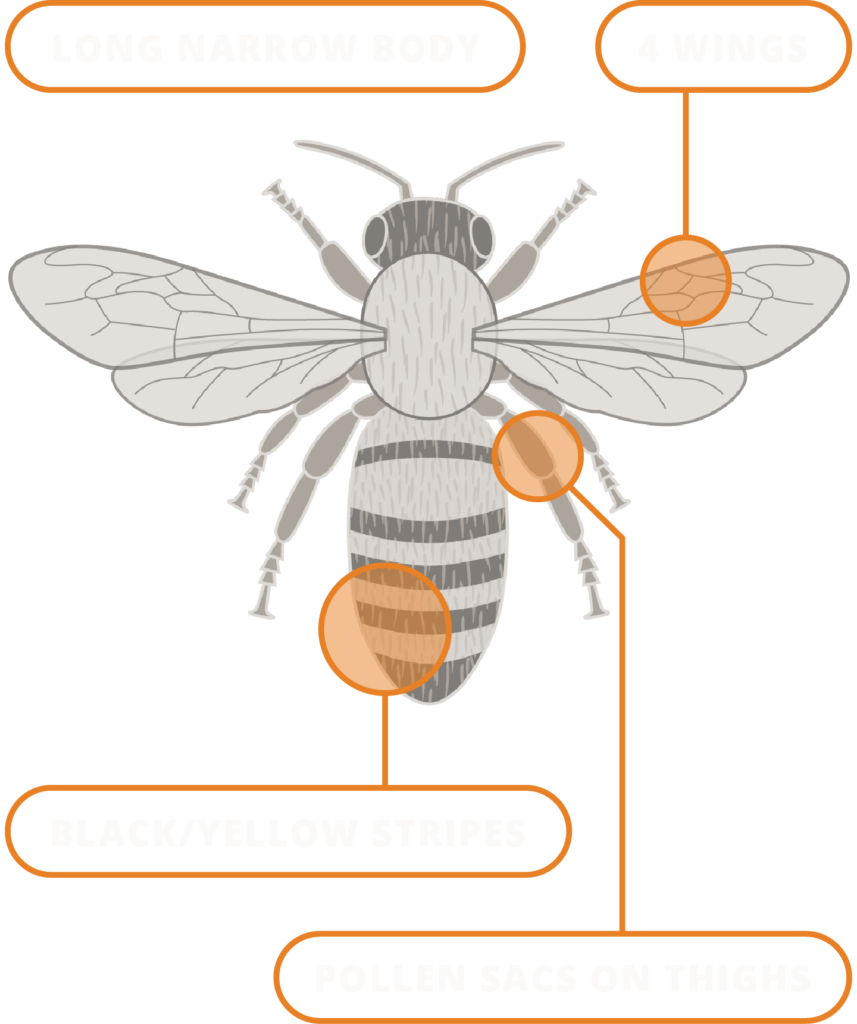
Size Range
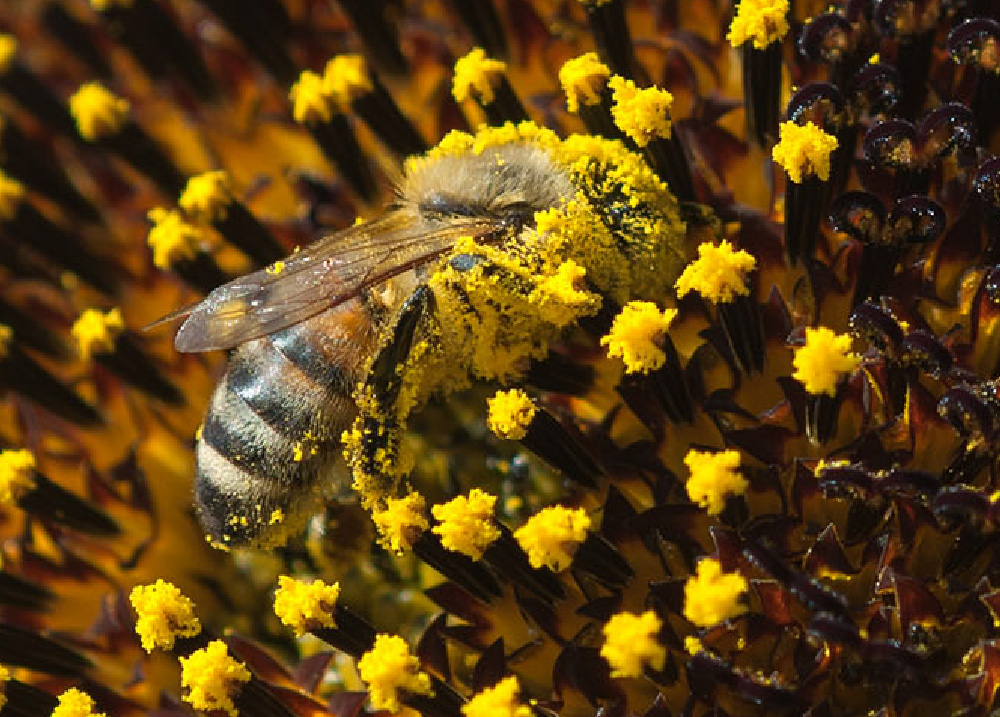
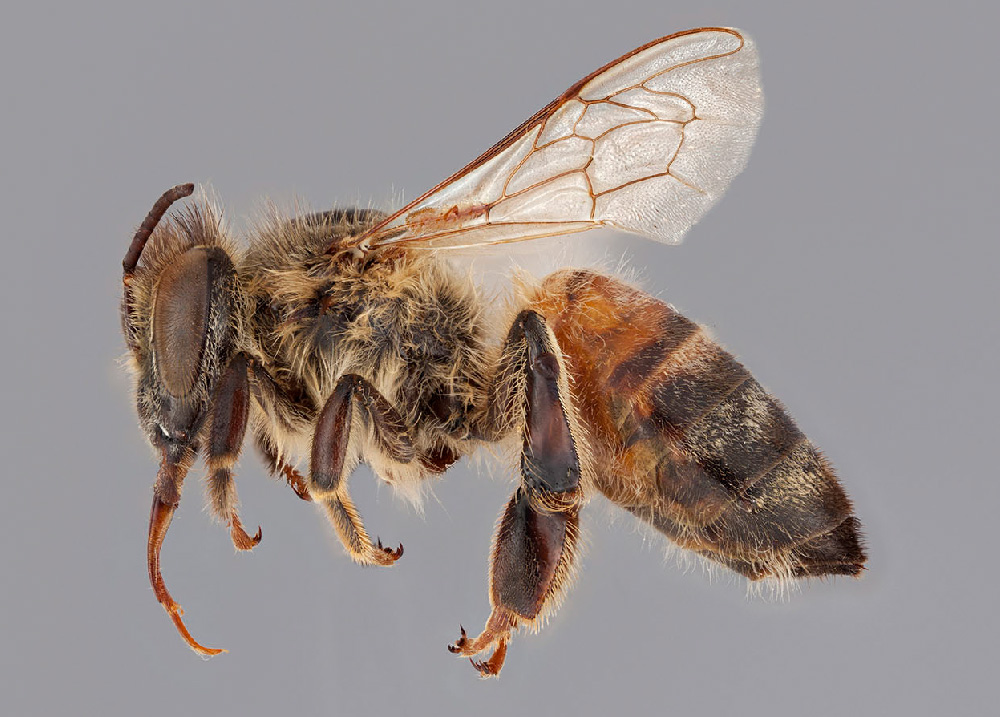
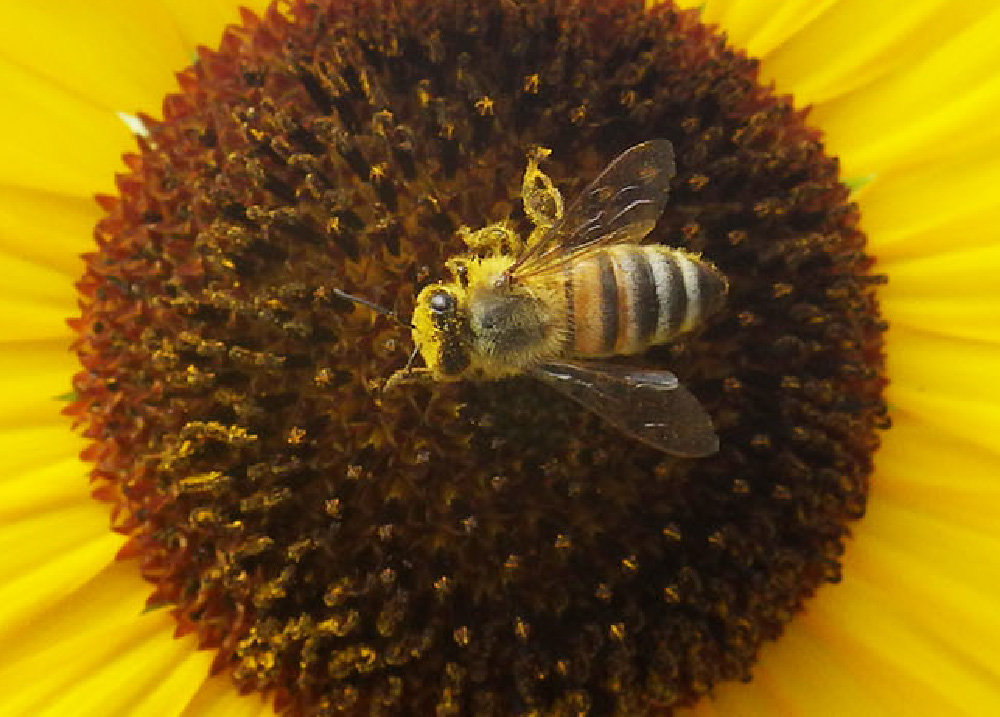
Bumble Bee · Apidae: Bombus
Overview
Bumble bees are in the family Apidae. They are medium to large fuzzy bees and usually have a deeper buzz sound than other bee groups. Bumble bees have queens and workers and therefore individuals can vary greatly in size depending on nutrition and their social role in the colony. Like honey bee workers, female bumble bees (including queens) also carry pollen on their hind legs in pollen baskets, also called their corbicula (one on each hind leg). Although bumble bee species can be observed by the colours on their abdomen, there are often variations in colour, even within a single species.
Key Identifiers
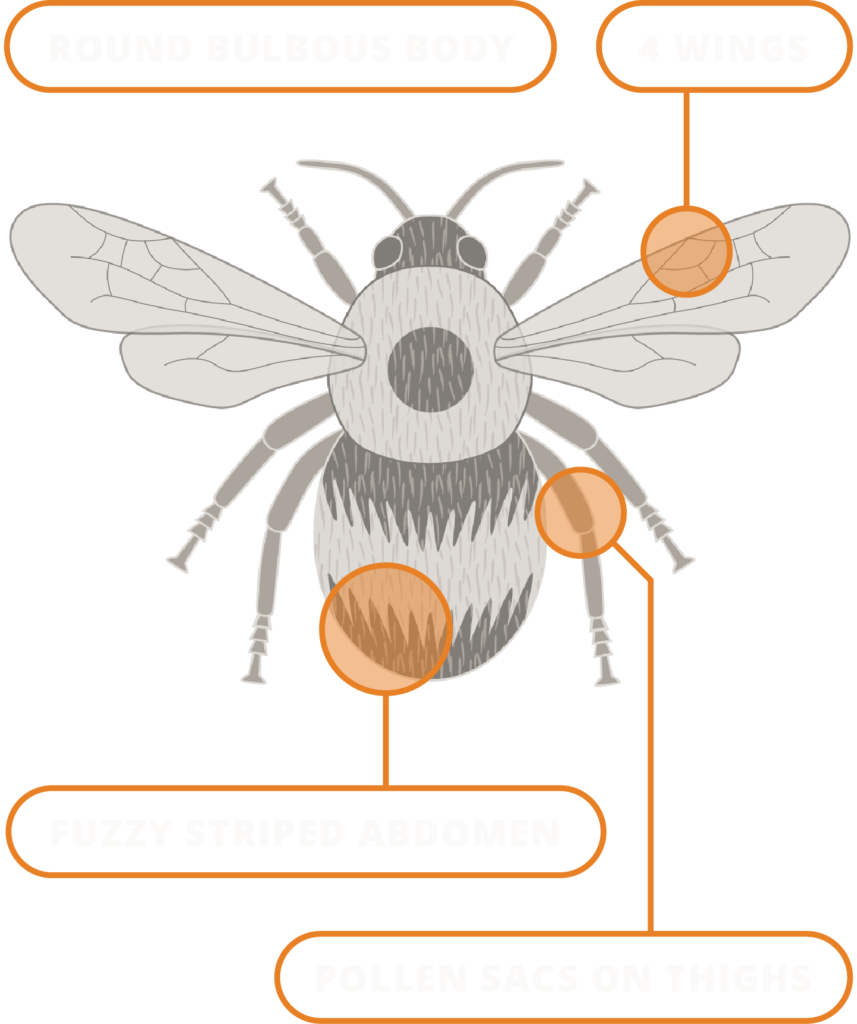
Size Range
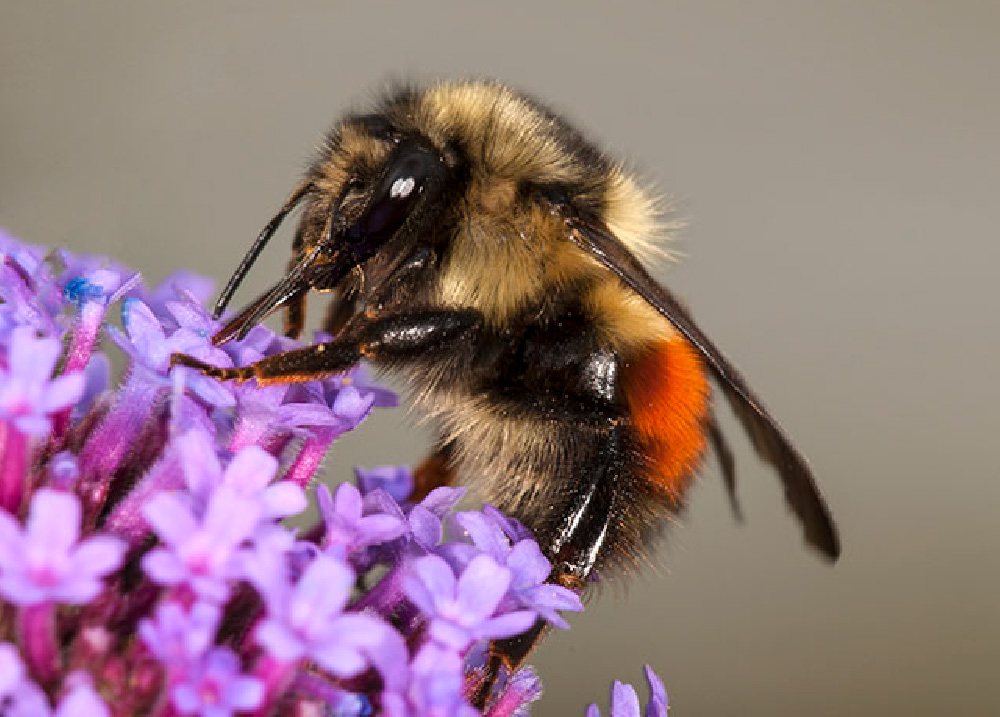
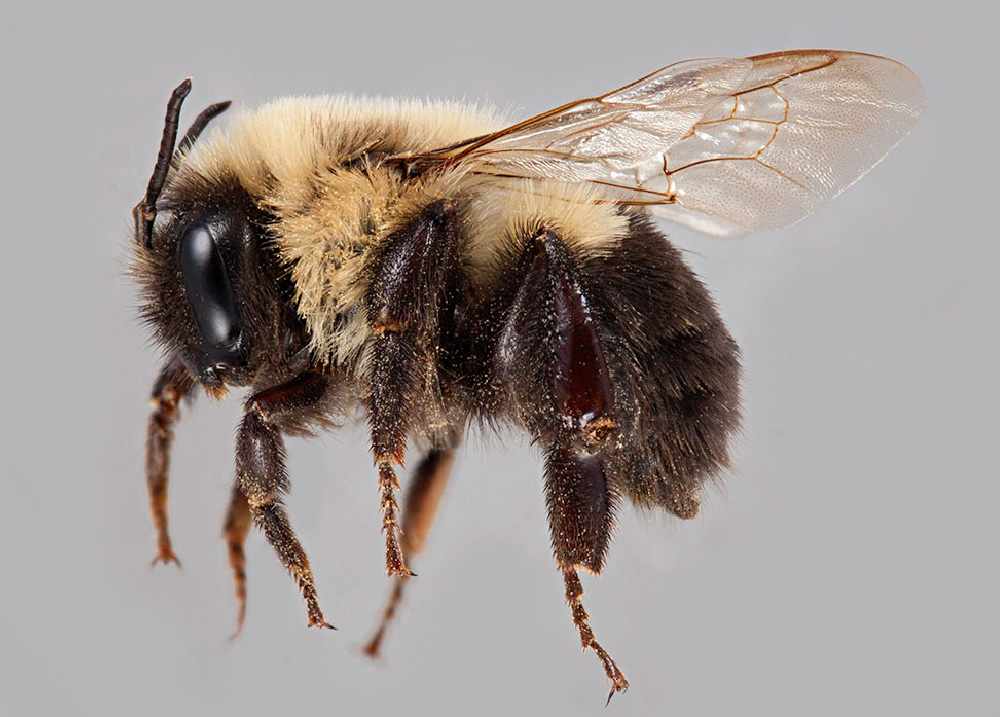

Mining Bee · Andrenidae, Halictidae, Colletidae
Overview
The mining bee category includes all ground nesting bees: miners, sweat bees, and plasterer bees (also referred to as polyester bees). Some females carry dry, dusted pollen on feathered scopa along the length of their legs, characteristically called “pollen pants”. Mining bees generally have dark, narrow bodies and minimal hair. A few species are bright metallic green.
Key Identifiers
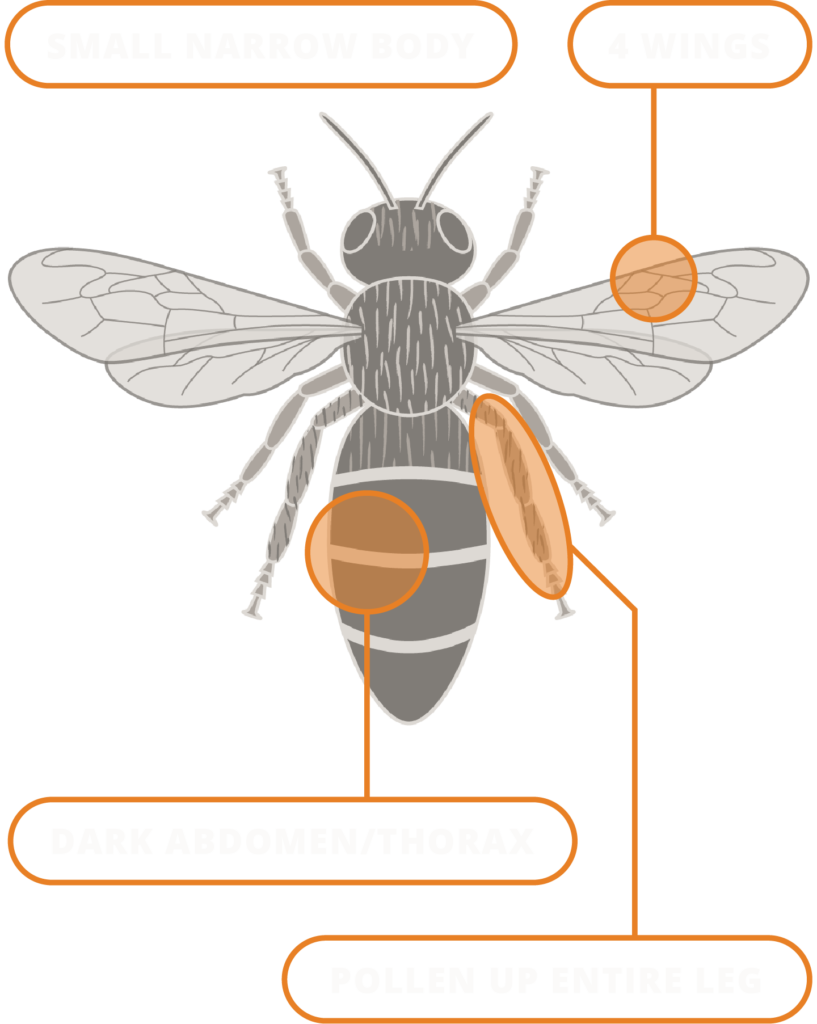
Size Range
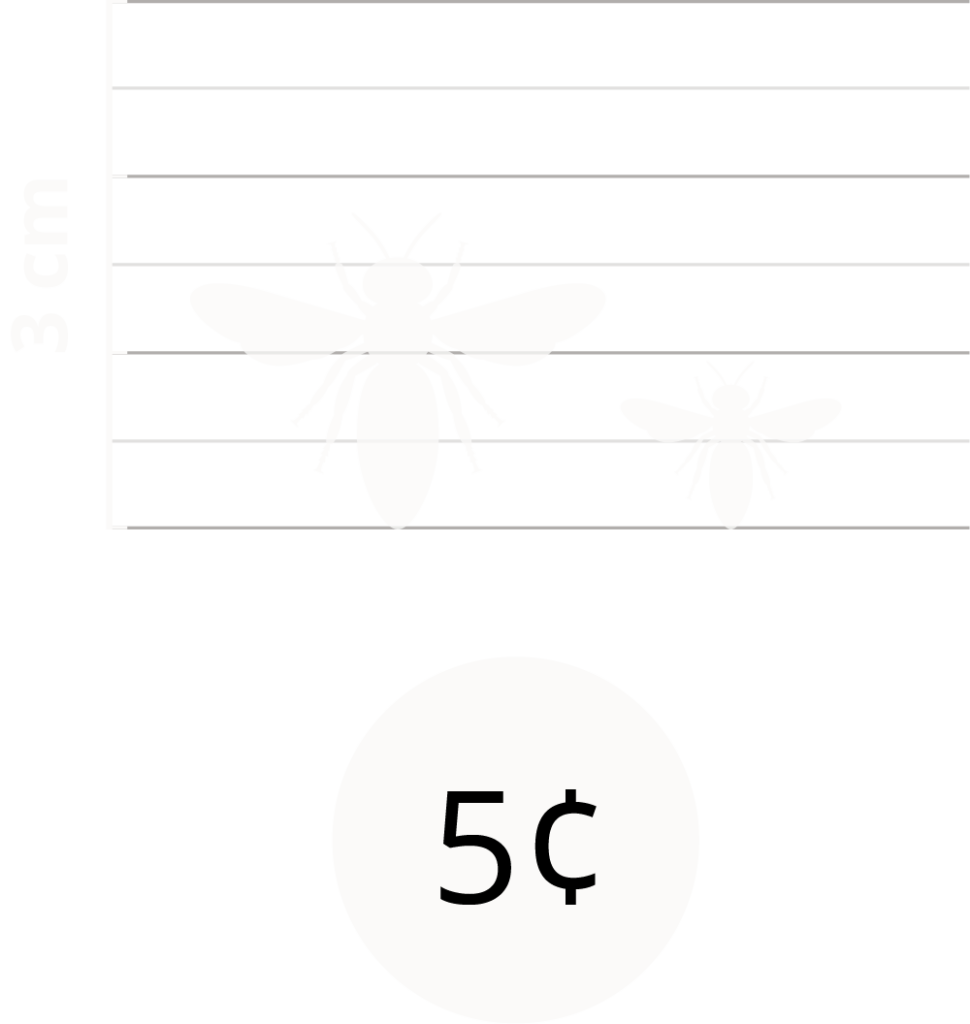
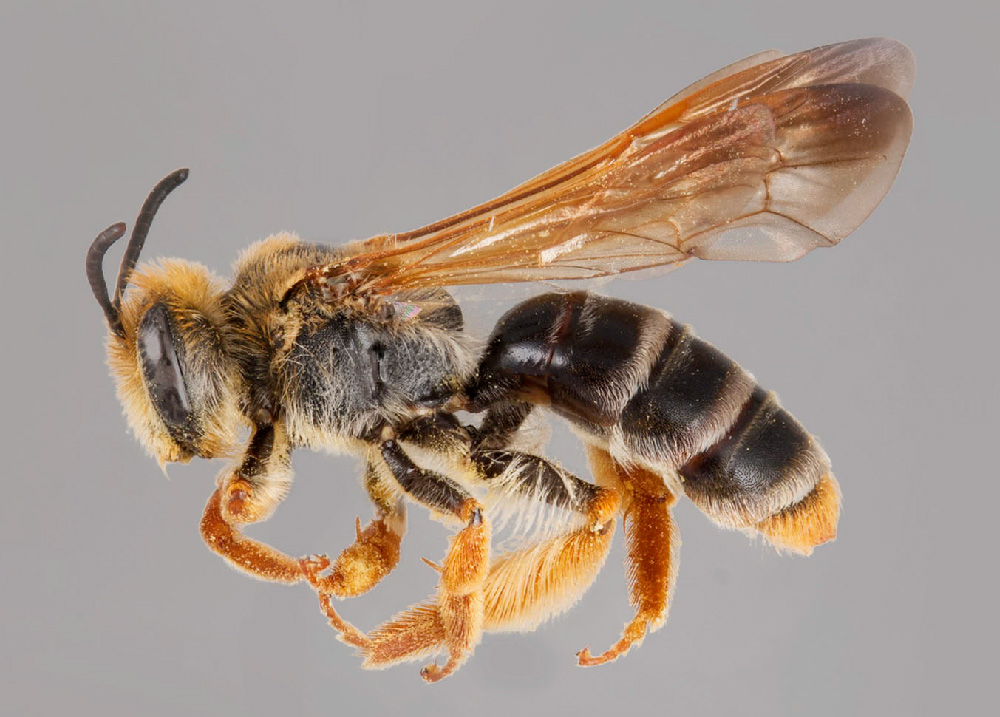
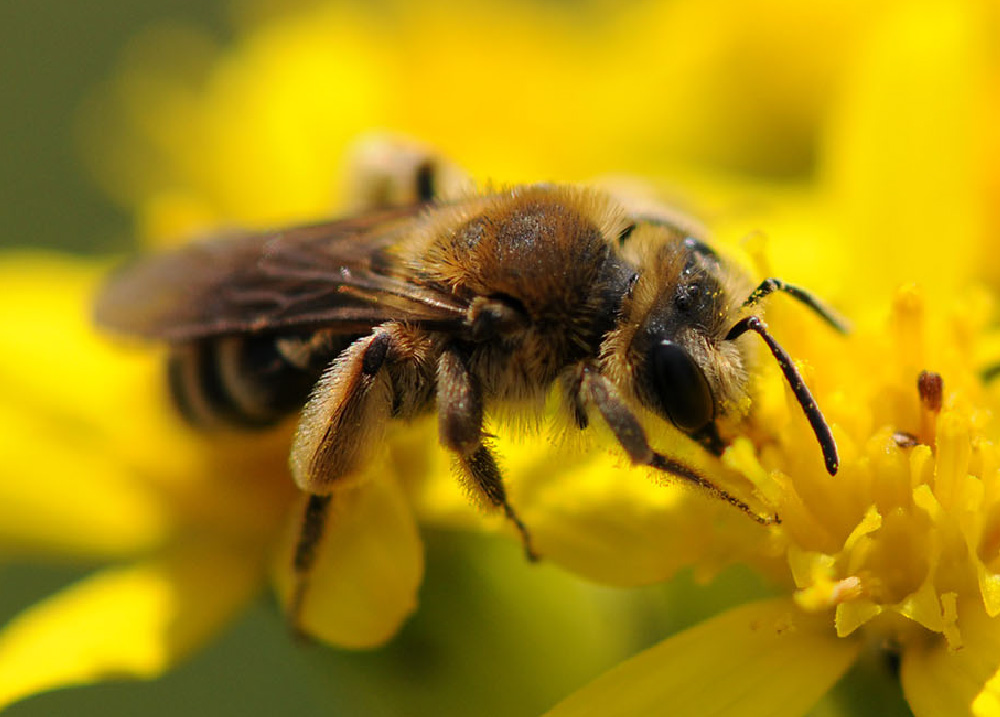
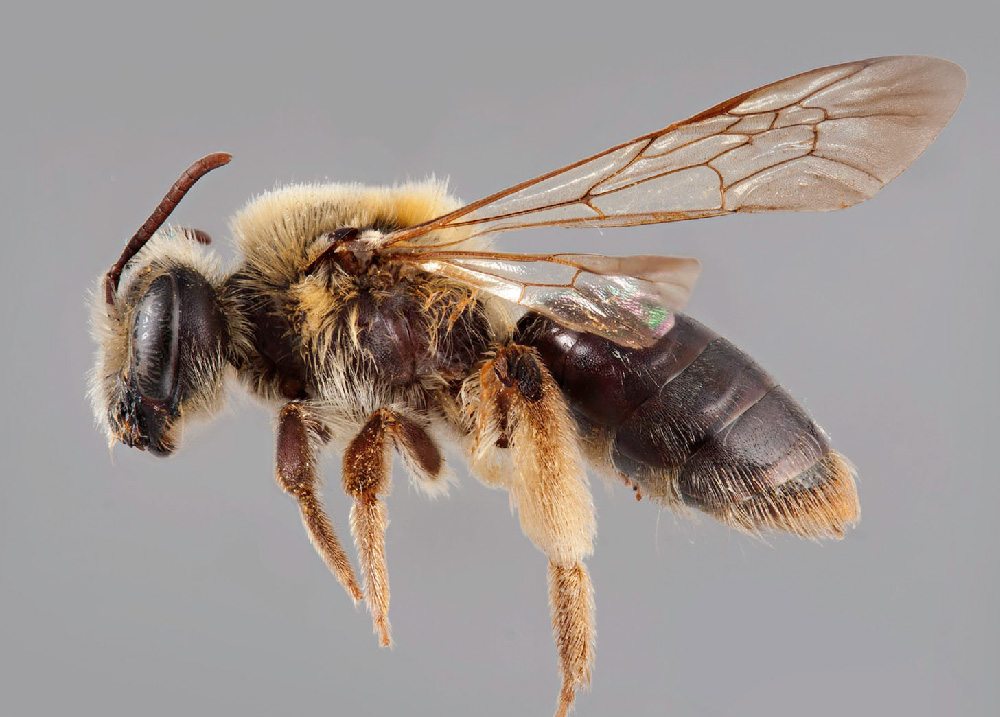
Hairy Belly Bee · Megachilidae
Overview
Hairy belly bees are small to medium-sized solitary bees in the family Megachilidae. Most hairy belly bees nest in tunnel-shaped cavities such as holes in trees or bamboo stakes placed in gardens. Female hairy belly bees re-purpose materials from nature to build walls in these cavities, including leaves, mud and tree bark. Hairy belly bees appear more rounded (bullet-shaped) than other bees. Females can be identified by a layer of scopa on the underside of their abdomen, often bright yellow when carrying pollen. Males do not have scopa on their bodies. Mason bees, leafcutter bees and resin bees are all a part of the hairy belly bee category.
Key Identifiers
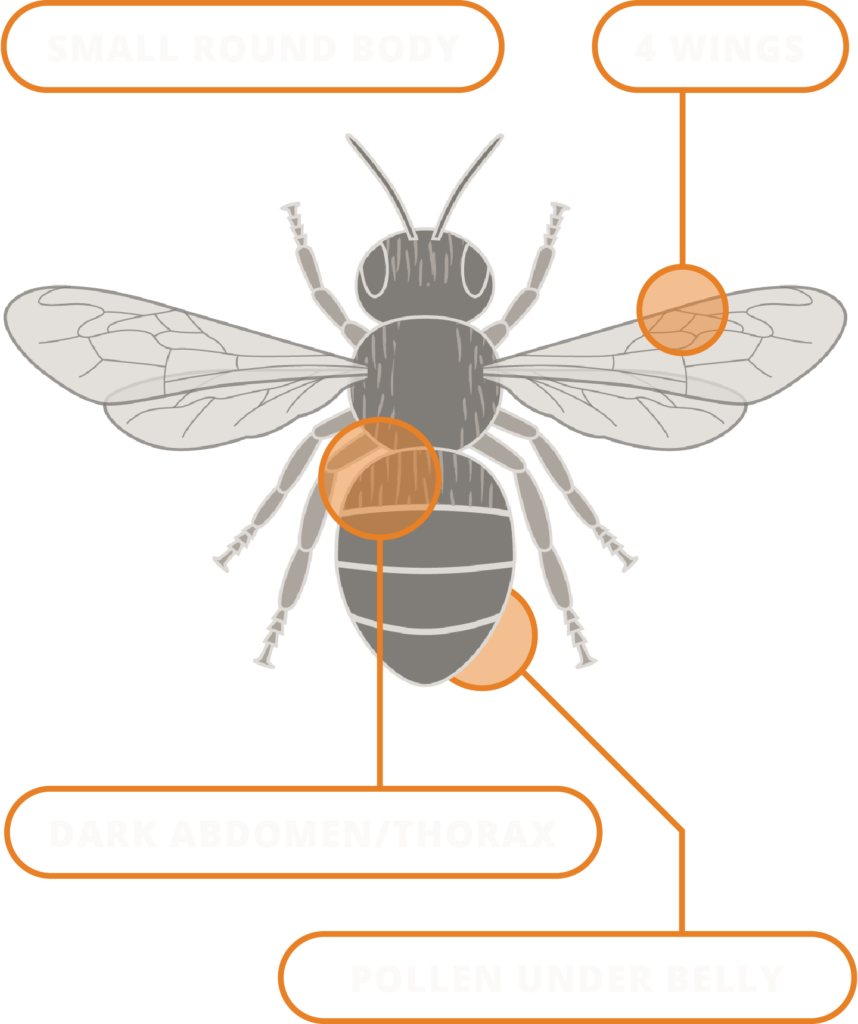
Size Range
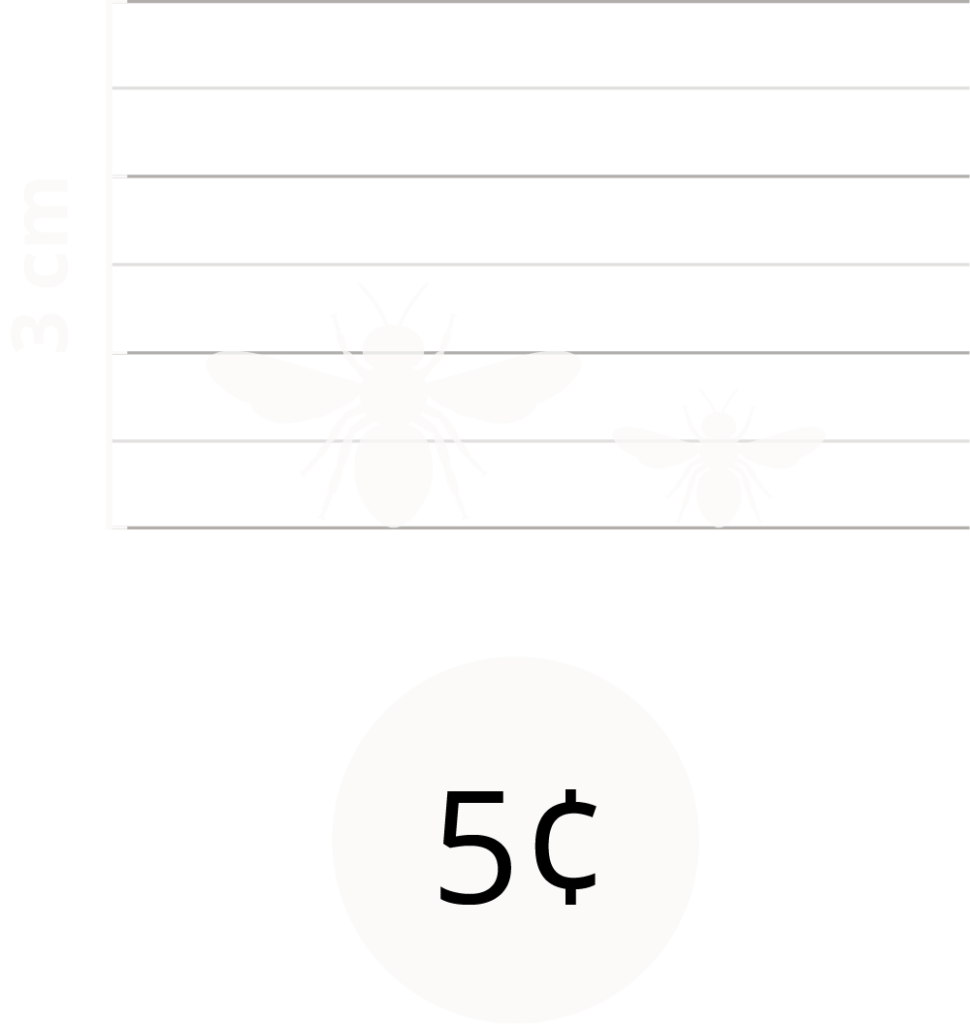
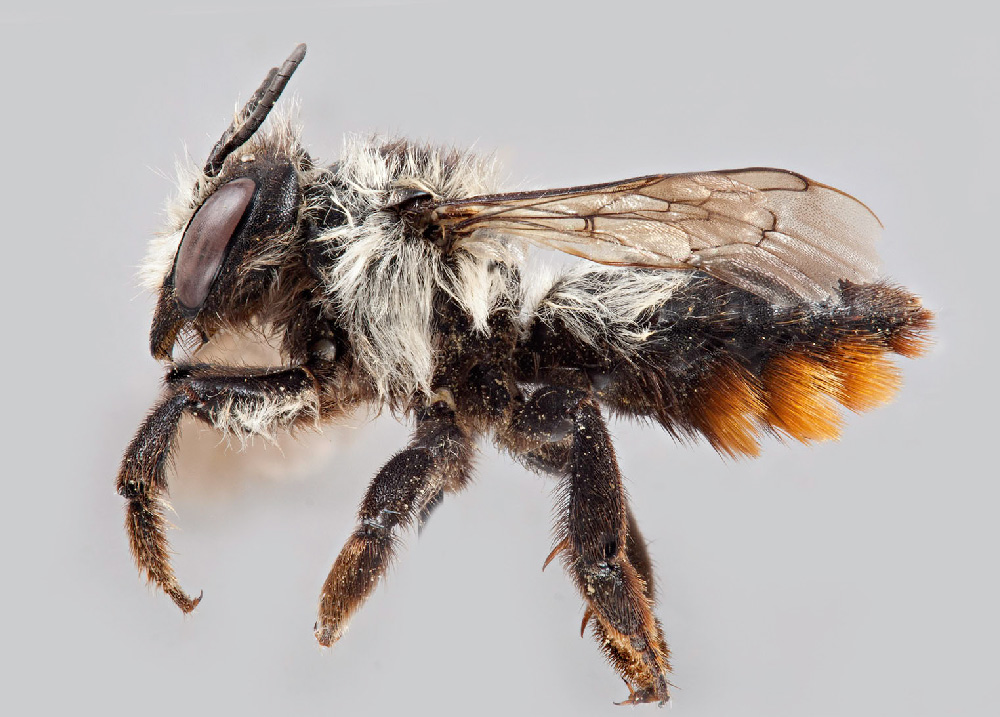

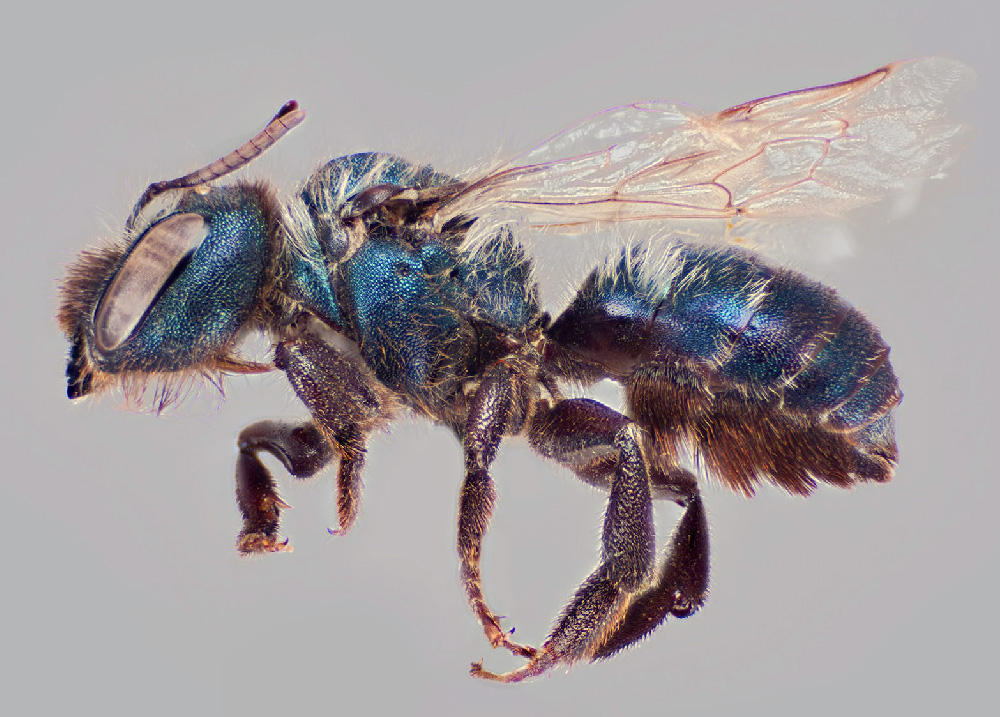
Hover Fly · Syrphidae
Overview
Hover flies, also referred to as flower flies, often mimic the look of bees with body colouration and sometimes even hair. They are distinguishable by their eyes which have a ski goggle appearance covering their entire length of face. Unlike bees, which have four wings, hover flies have two wings along with a pair of small appendages called halteres (remnant wings). They also have very small antennae relative to the longer, more conspicuous antennae of bees. Many kinds of hover flies appear to hover with stop-start abrupt movements, which is observably distinct from the smoother flight pattern of bees. They are good pollinators of open faced flowers, and often dominate pollination in high altitude zones.
Key Identifiers
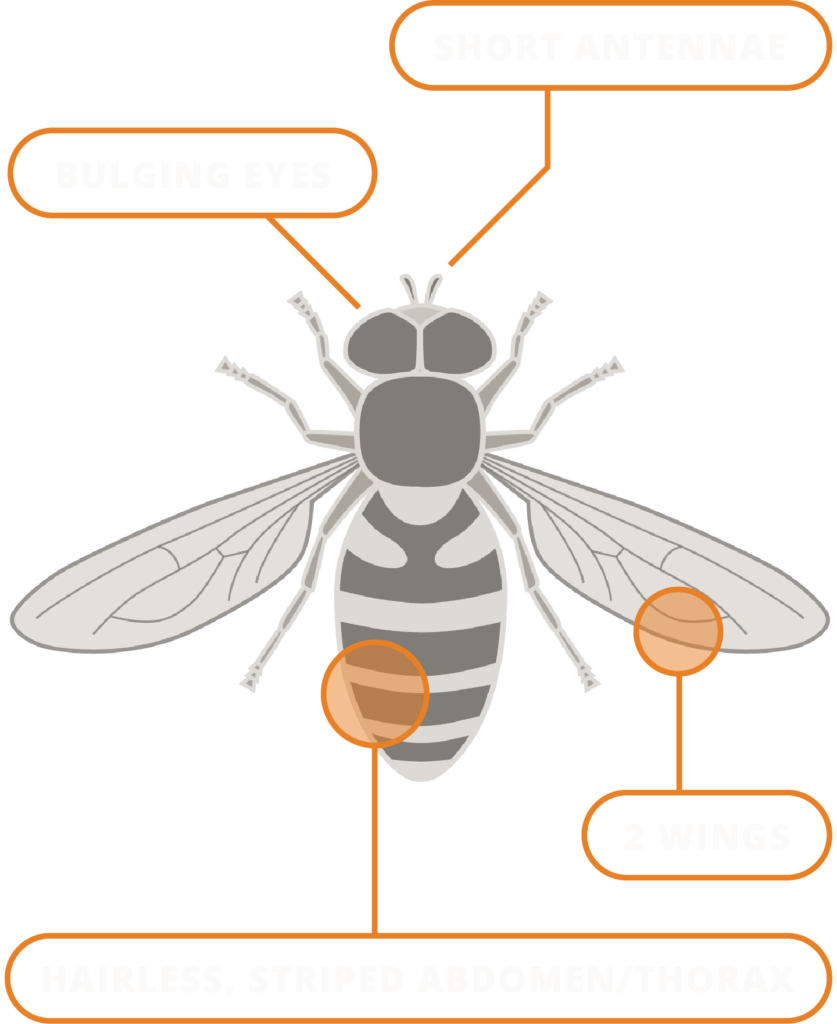
Size Range

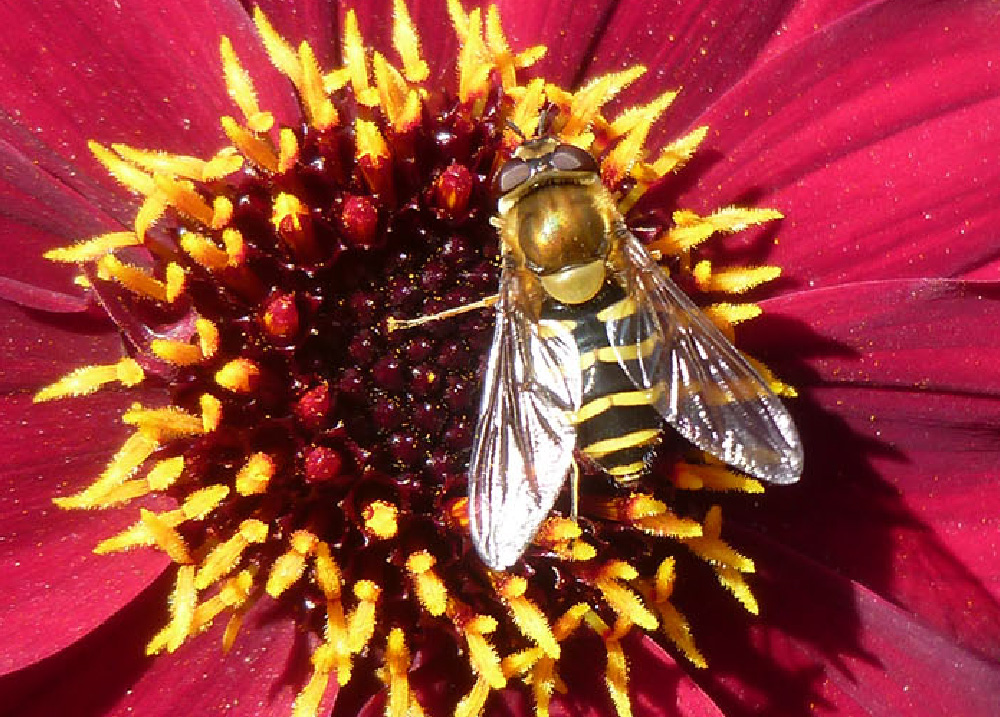
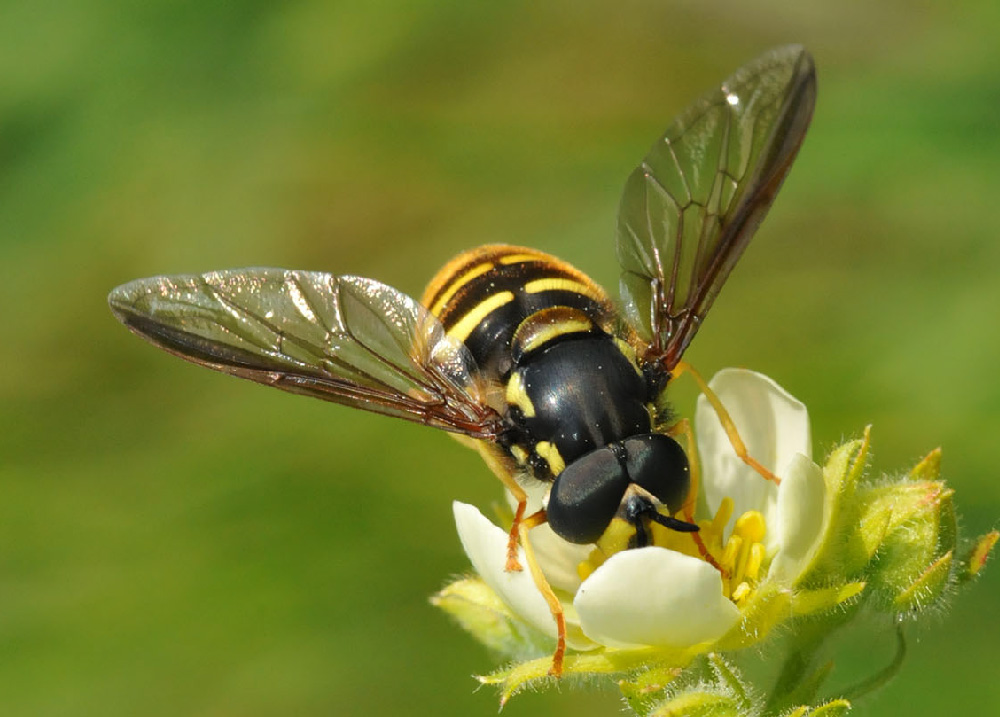
Butterfly · Lepidoptera
Overview
Butterflies are conspicuous and beautiful insects that fly using two sets of wings. The bodies and wings of butterflies and other Lepidopterans are covered in minute delicate scales, and species vary greatly in both size and colour. There are about 187 species found in BC, but only a handful that are common in urban centres. Butterfly populations thrive in grassland and coastal meadows in British Columbia. Two common non-native butterflies are Cabbage White and European Skipper. A rare butterfly found in Vancouver is Johnson’s Hairstreak. While butterflies generally pollinate and feed on nectar from daytime-blooming flowers, moths (their nocturnal counterparts) generally pollinate night-blooming flowers.
Key Identifiers
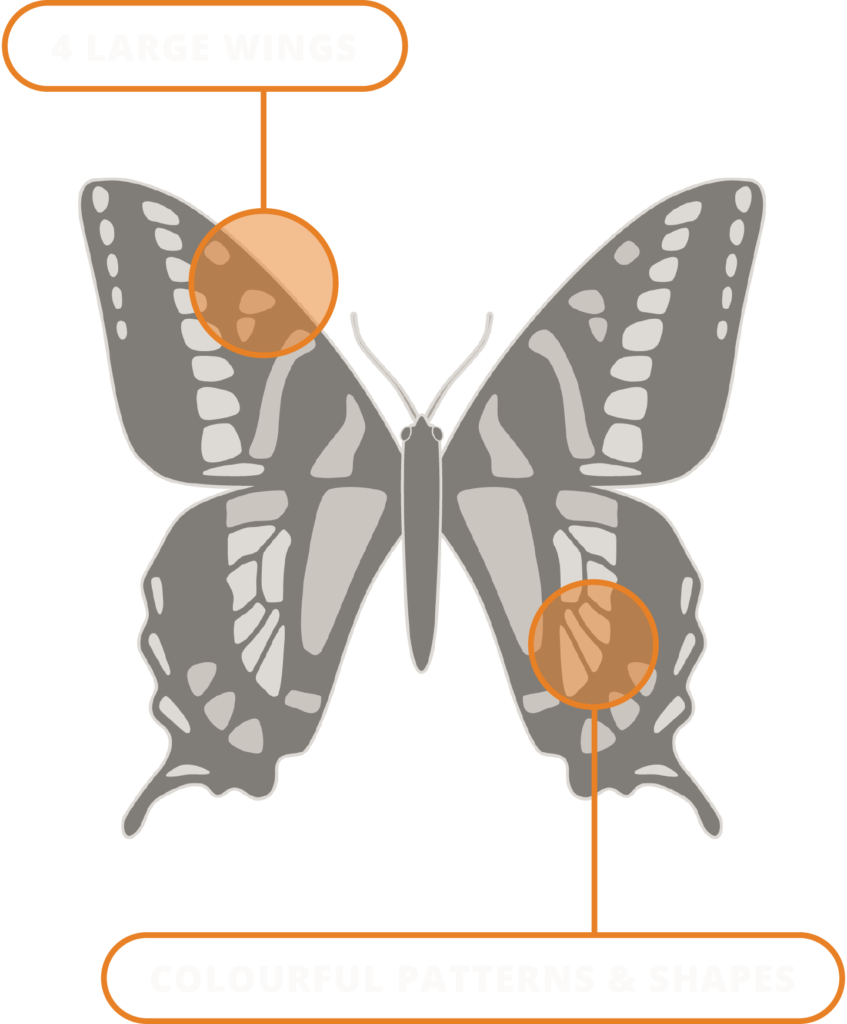
Size Range
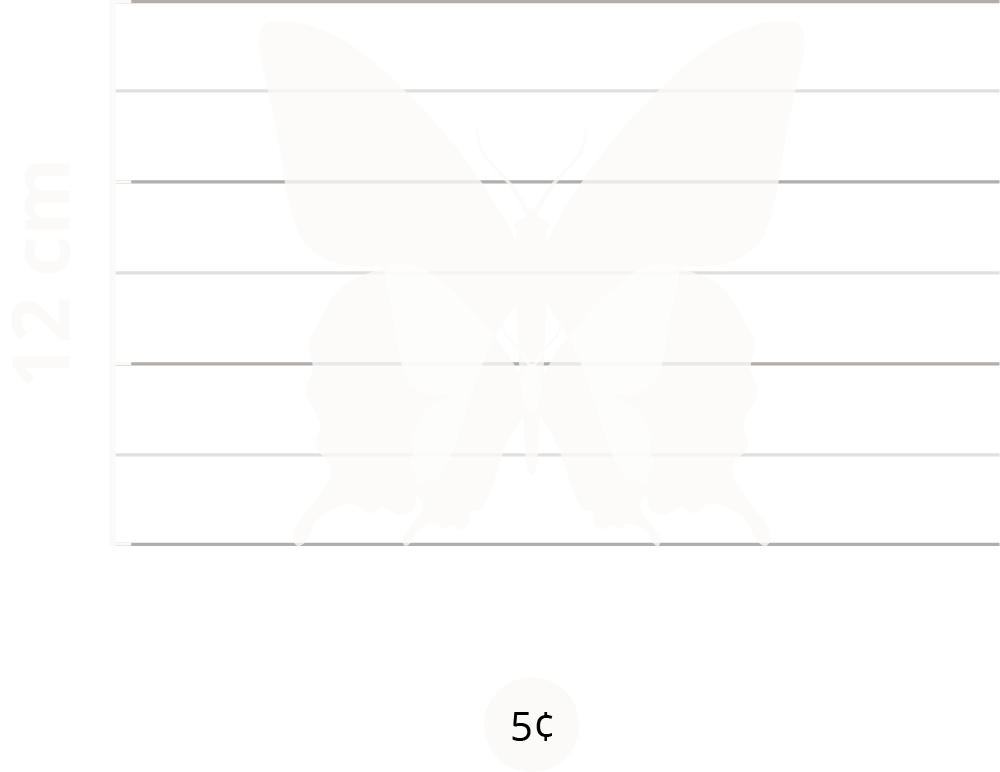
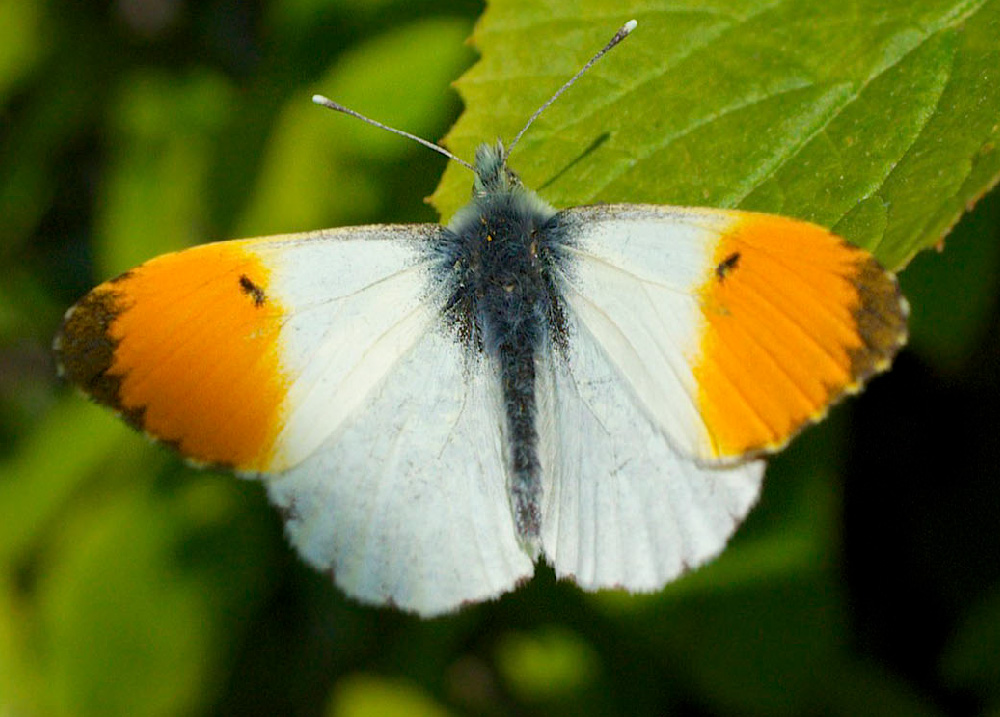
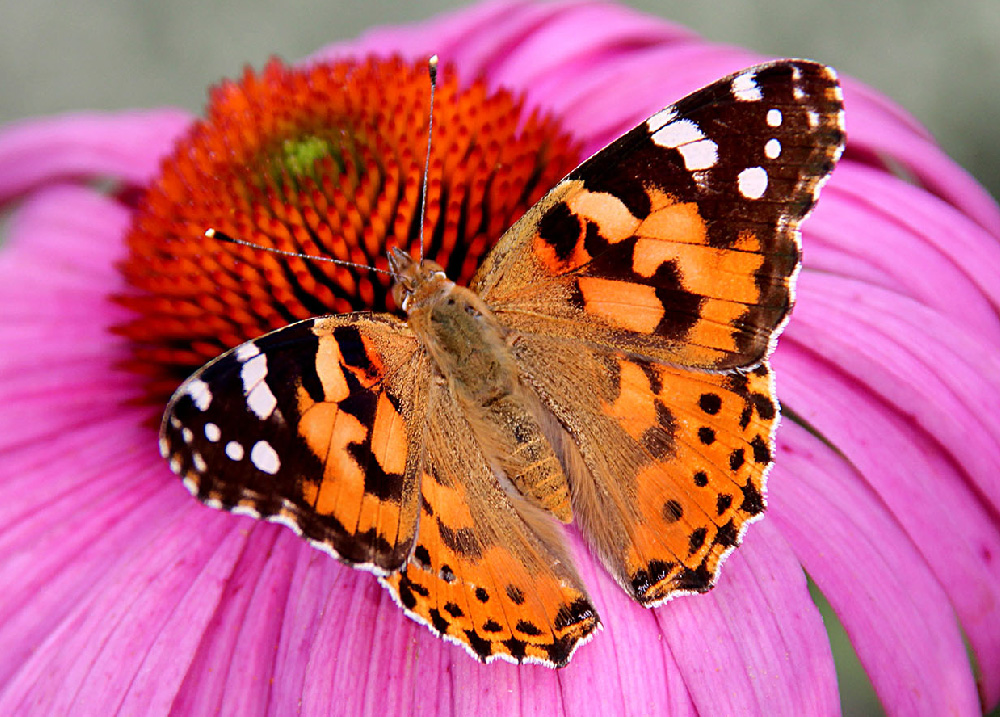
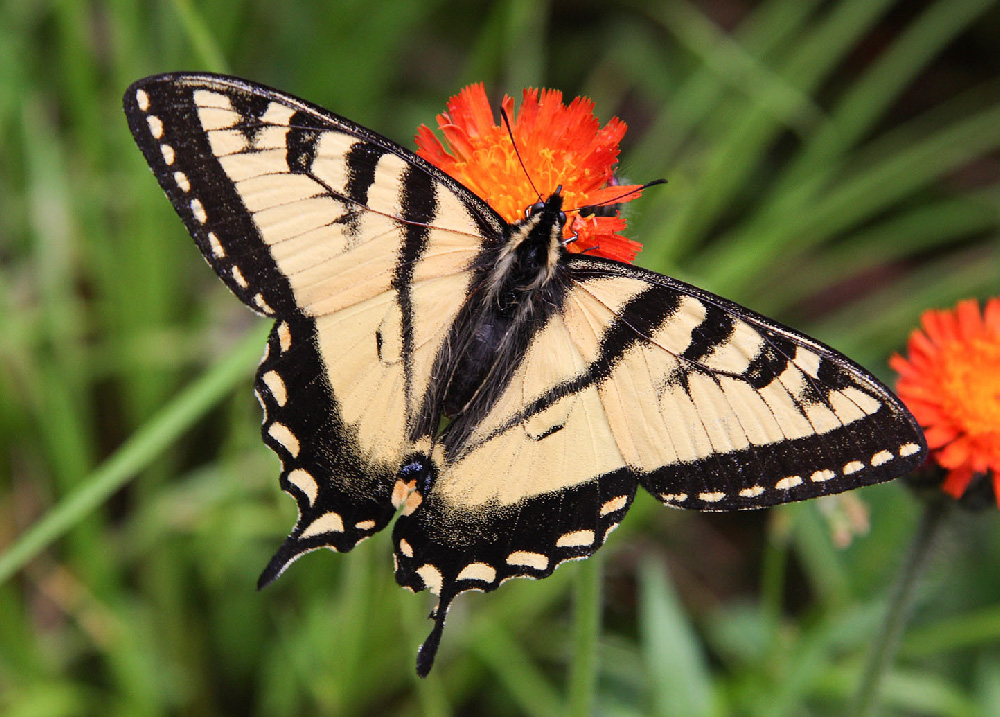
Wasp · Vespidae & other families
Overview
Wasps are diverse in size, shape, and colour, spanning several families in the order Hymenoptera. Vespid wasps – described in this section – are the most common family in BC. Bees are also Hymenopterans, and therefore share physical similarities with wasps. They are often distinguishable by having fewer visible hairs, and lack scopa (pollen-collecting hairs). Their bodies may appear smooth, often with a visible constriction (narrowed “waist”) between their thorax and abdomen. While some Vespid species are solitary, most are social, forming colonies with queens, workers and drones (similar to honey bees). Vespid wasps are omnivorous, provisioning their kin with a wide variety of forage and small prey items including other insects and spiders. Some species also feed on nectar, pollinating plants in the process.
Key Identifiers
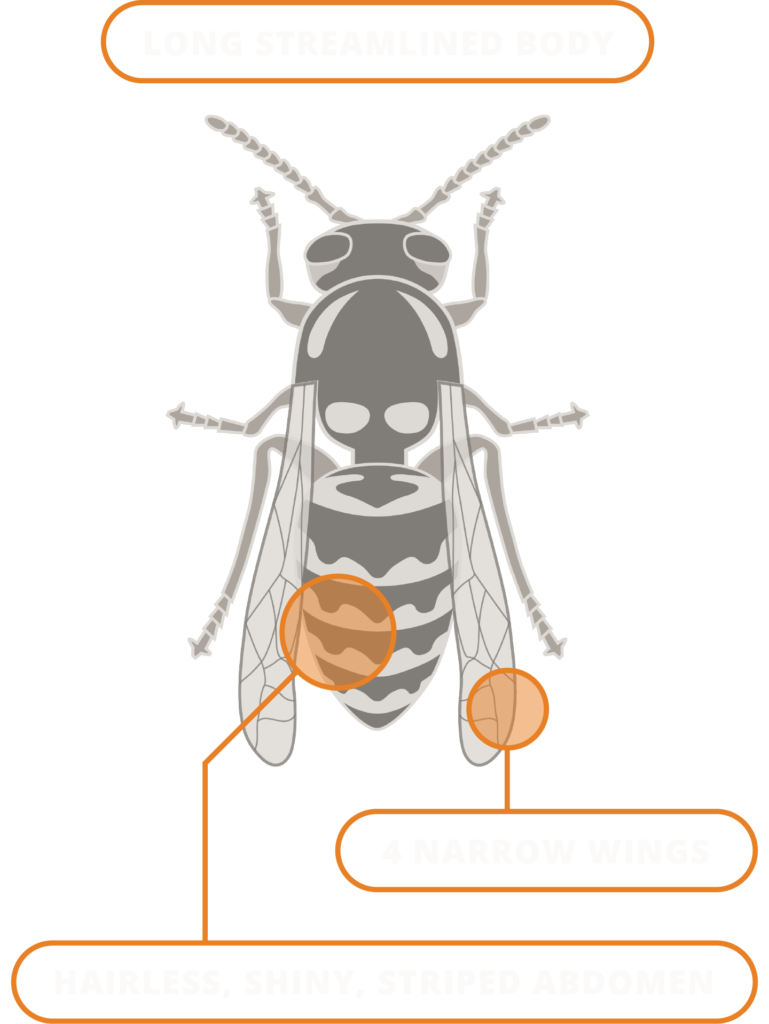
Size Range
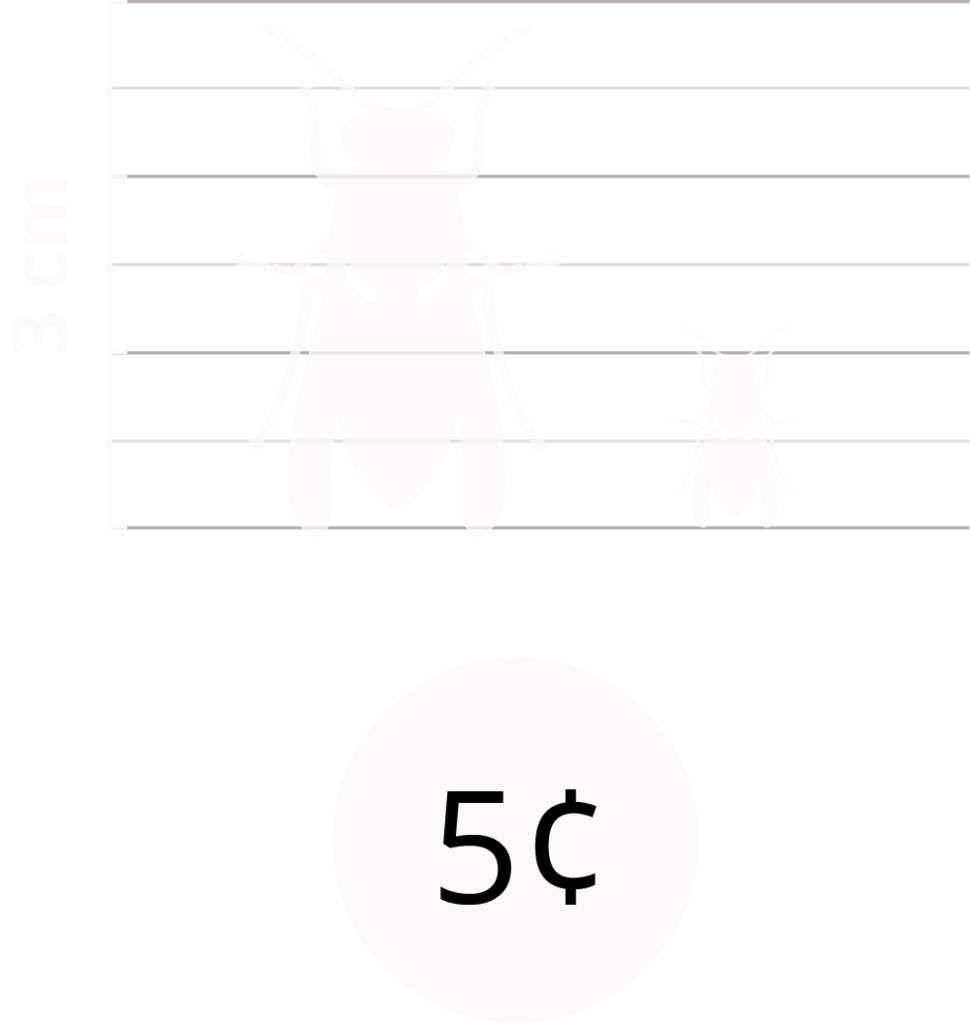
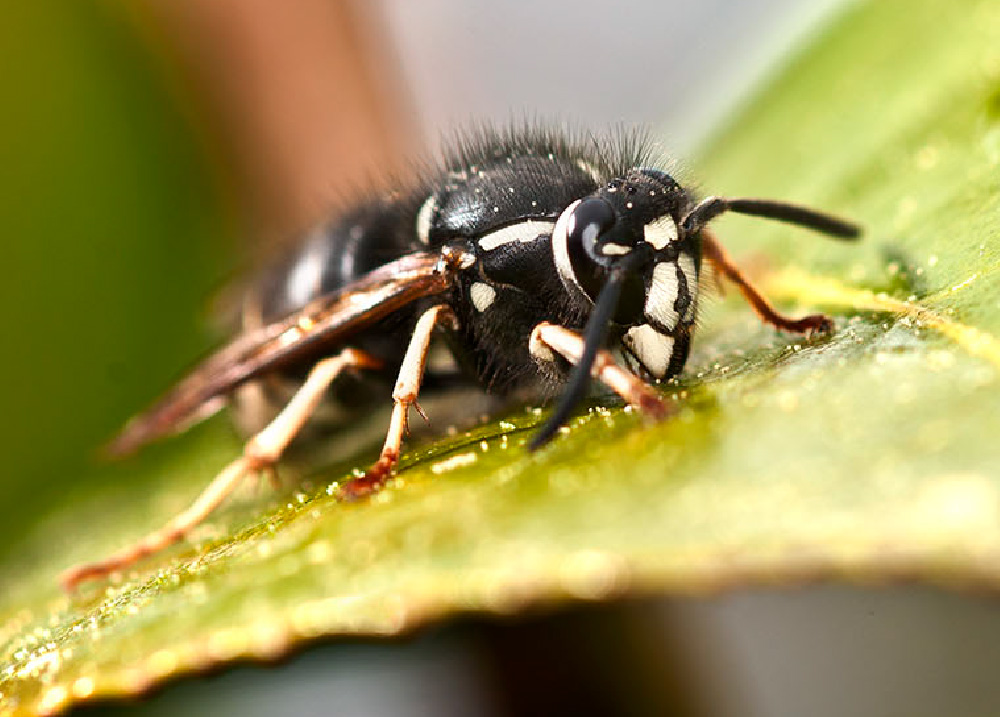
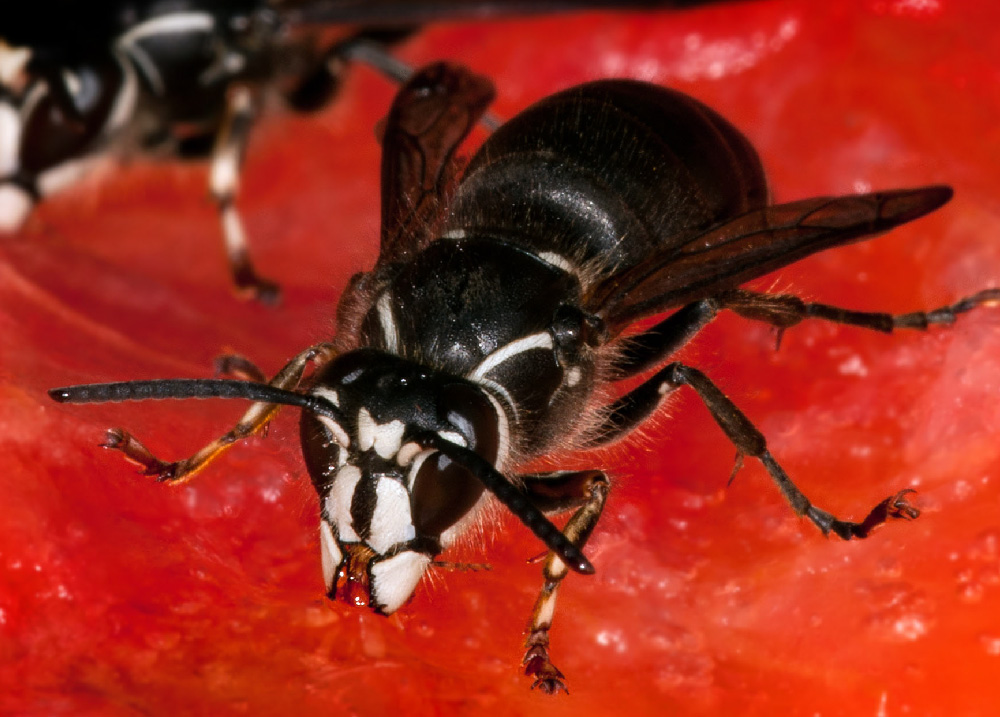
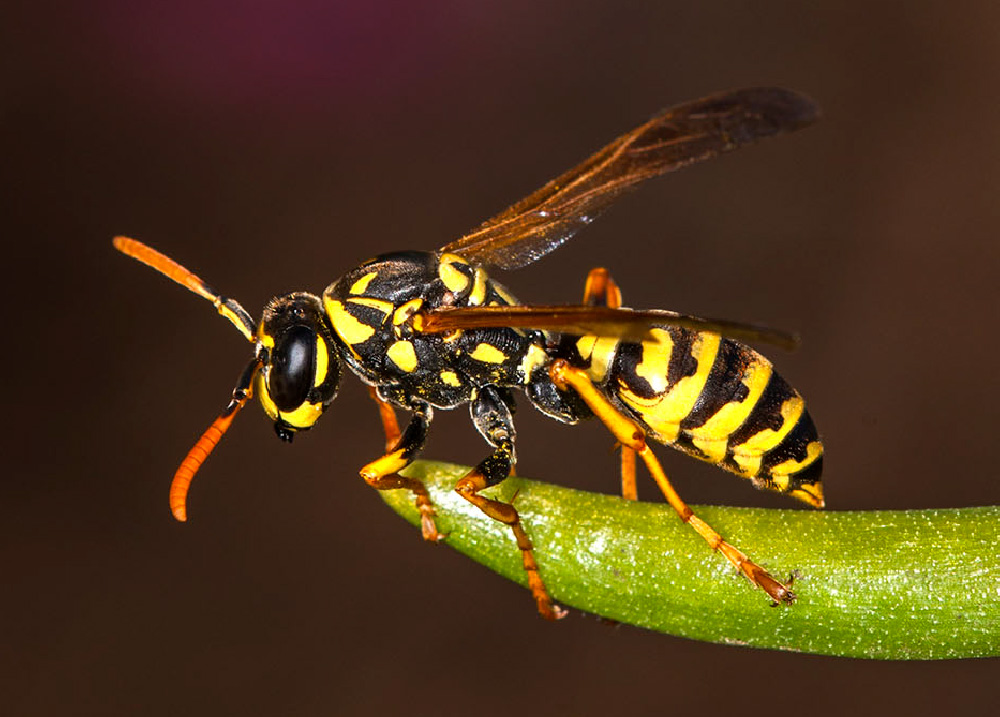
About the Project
In 2015, Cameron Cartiere and Geoffrey Campbell of Border Free Bees joined together to create a tool that would empower citizens to learn about North America’s essential pollinators and participate in observation-based research. The concept and app design was carried out by Campbell as his undergraduate thesis project at Emily Carr University. Over two years, Border Free Bees engaged various community organizations in the design process through focus groups, educational workshops and app testing sessions. Scientists and community experts, including Dr. Elizabeth Elle and Dr. Lora Morandin, played a key role in informing and validating the scientific aspects of the design. In 2018 Border Free Bees partnered with Pollinator Partnership to develop the Insight Citizen Science iOS app. The free iOS app was launched in North America in 2019.

